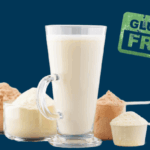Canadian vs US Food Labelling
One of the most common questions from Dell Tech’s US clients is whether a US food label can be used compliantly in Canada. While US and Canadian food labels may appear similar at first glance, key differences in regulations make it impossible to create a label that is fully compliant with both countries’ requirements. Below, we highlight several key differences and areas to consider when importing or exporting your product.
Net Quantity Declarations
The first major difference lies in the units used for net quantity declarations. In Canada, metric units (mL/L, g/Kg) are required and must be the most prominent if other units are also listed. Conversely, the US allows both metric units and customary units (pounds/ounces, gallons/pints), without specifying an order of precedence. For instance:
- In Canada: The net quantity must be declared as “500 mL (1 pt 0.9 fl oz).”
- In the US: It can be declared as either “500 mL (1 pt 0.9 fl oz)” or “1 pt 0.9 fl oz (500 mL).”
Additionally, both countries mandate that the net quantity be displayed on the Principal Display Panel (PDP). However, the US further requires this information to appear on the bottom 30% of the front panel.
Serving Size
Serving sizes also differ between US and Canadian labels. Each country has its own guidelines for determining appropriate serving sizes for specific food categories. In the US, this is governed by the Reference Amount Customarily Consumed (RACC), while Canada uses the Table of Reference Amounts for Food. Although some values overlap (e.g., cookies are listed as 30 g in both), others differ significantly. For example:
- Syrups used as toppings: 60 mL in Canada vs. 30 mL in the US.
Careful attention is required to ensure the correct serving size is used for each market.
Nutrition Facts Table
Both US and Canadian food labels include a Nutrition Facts table, but the formatting and required information differ considerably:
- Caloric Declaration:
- US labels emphasize the numerical caloric value as the most prominent feature.
- Canadian labels display the heading “Calories” and its value in the same font size.
- Canadian labels display the heading “Calories” and its value in the same font size.
- Sugar Declaration:
- US labels divide sugar into “Total Sugars” and “Added Sugars.”
- Core Nutrients:
- US labels now include “Vitamin D” and “Potassium” as mandatory, replacing the previously required “Vitamin A” and “Vitamin C.”
- Canadian labels do not require “Vitamin D” to be listed.
- Daily Values (DV):
- Some values differ, such as the DV for fat (75 g in Canada vs. 78 g in the US).
- Formatting Details:
- Canadian labels require the footnote: “*5% or less is a little, 15% or more is a lot.”
- In Canada, there is a space between numeric values and units (e.g., “10 g”), whereas in the US, there is no space (e.g., “10g”).
- Serving size is bolded on US labels but not in Canada.
- The US requires “Servings Per Container” to be declared alongside serving size, while Canada does not.
Navigating Regulatory Differences
Understanding and navigating the differences between US and Canadian food labeling regulations can be challenging. If you need assistance in bringing your US product into compliance with Canadian requirements, contact Dell Tech for expert guidance.
DELL TECH HAS PROVIDED PROFESSIONAL, CONFIDENTIAL CONSULTING SERVICES TO THE SPECIALTY CHEMICAL INDUSTRY IN CANADA, THE USA, EUROPE AND ASIA FOR THE LAST 40 YEARS.




